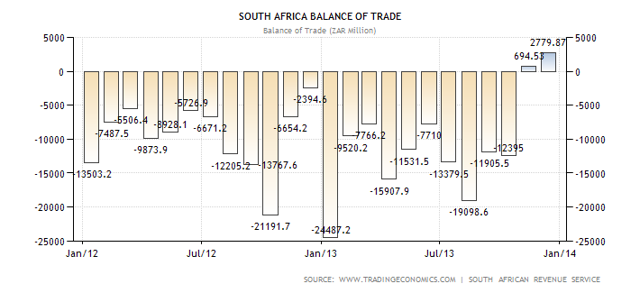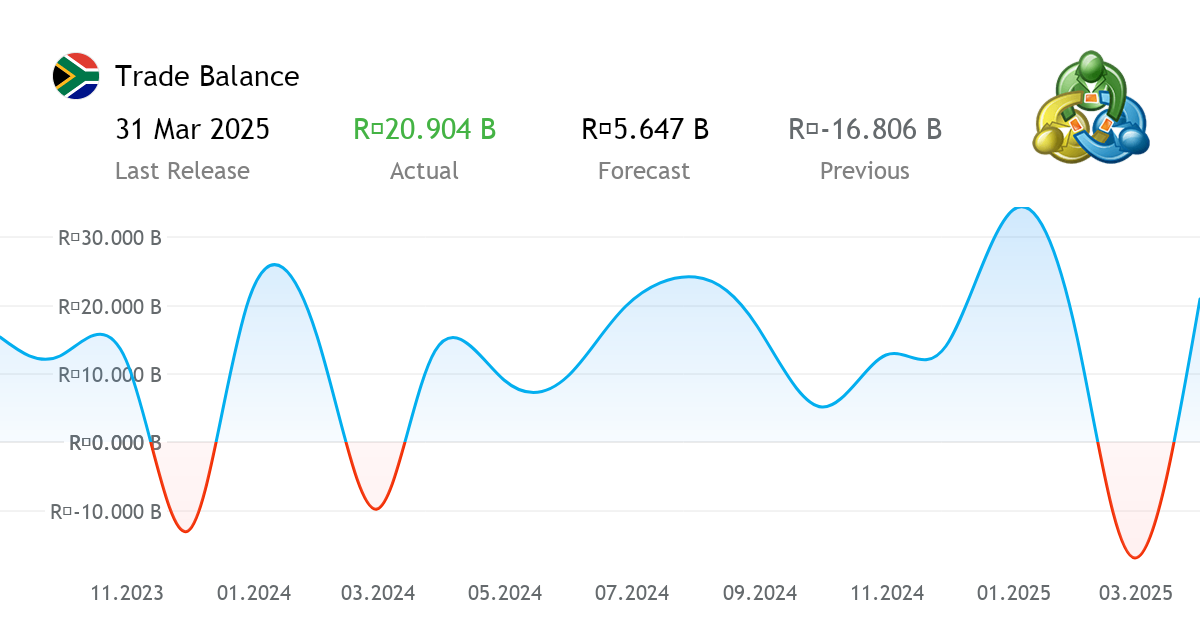Introduction
South Africa’s trade balance, a key indicator of the country’s economic well-being, has experienced significant fluctuations since 1980. Understanding the dynamics of this balance over the years is crucial for policymakers seeking to foster economic stability and growth.

Image: seekingalpha.com
In this article, we delve into the historical trajectory of South Africa’s trade balance from 1980 to 2017, analyzing key factors driving these fluctuations, dissecting their impact on the economy, and exploring implications for the future.
The Balance of Trade: A Balancing Act
The trade balance is the difference between the value of a country’s exports and imports. A positive trade balance indicates that the country is exporting more goods and services than it is importing, while a negative trade balance signifies that the country is importing more than it is exporting.
The trade balance plays a critical role in shaping a country’s economic growth, employment, exchange rate, and inflation. A sustained positive trade balance can indicate economic competitiveness and expansion, while a persistent negative trade balance can lead to currency depreciation and potential economic contraction.
South Africa’s Trade Balance from 1980 to 2017: A Historical Retrospective
South Africa’s trade balance has undergone several phases since 1980. In the early 1980s, the country experienced a large positive trade balance due to increased demand for its exports, particularly gold and other minerals. However, the mid-1980s witnessed a decline in this surplus as the value of gold exports plummeted and imports surged.
In the 1990s, the trade balance improved again, with the abolition of apartheid and the country’s reintegration into the global economy. However, the recovery was short-lived, and a sharp decline in the trade balance occurred in the late 1990s due to the Asian financial crisis and the subsequent global downturn.
The early 2000s brought about a period of trade balance expansion, which reached a peak in 2008. This growth was primarily driven by high commodity prices and strong global demand for South African exports. However, the 2008 global financial crisis led to a dramatic reversal, with the trade balance plummeting into a deficit.
From 2009 onwards, the trade balance began to improve again, albeit gradually. However, a persistent negative trade balance has continued to burden the South African economy, signaling the need for structural reforms to address this issue.
Factors Influencing South Africa’s Trade Balance
Multiple factors have influenced the fluctuations in South Africa’s trade balance over the years. These include:
- Global economic conditions: External factors, such as the global demand for commodities and economic downturns, have had a substantial impact on South Africa’s exports and trade balance.
- Domestic economic policies: The government’s fiscal and trade policies, such as import tariffs and export subsidies, have influenced the competitiveness of South African goods and services in the global market.
- Exchange rate fluctuations: Changes in the value of the South African rand have affected the cost of imports and the profitability of exports.
- Structural factors: The country’s overreliance on certain exports, such as minerals, and its limited export diversification have made the trade balance vulnerable to price fluctuations.

Image: www.mql5.com
Consequences of Trade Balance Fluctuations
The fluctuations in South Africa’s trade balance have had various consequences for the economy:
- Economic growth: A positive trade balance has supported economic growth by increasing foreign exchange earnings, boosting investment, and creating jobs.
- Employment: Export-oriented industries tend to create more employment opportunities, contributing to job creation and economic development.
- Exchange rate: A persistent trade deficit can put downward pressure on the exchange rate, leading to currency depreciation and potentially increasing import prices.
- Inflation: A large trade deficit can contribute to inflation by making imports more expensive.
Balance Trade In South Africa Since 1980 To 2017
Conclusion
South Africa’s trade balance has undergone a significant journey since 1980. The fluctuations have been influenced by both domestic and external factors, with a notable impact on the economy. Understanding the dynamics of the trade balance is crucial for policymakers to design appropriate policies aimed at promoting economic growth, reducing trade deficits, and enhancing the country’s global competitiveness.
While South Africa has made progress in improving its trade balance in recent years, the path ahead requires ongoing efforts to diversify exports, promote industrialization, and improve the overall competitiveness of the economy. By tackling these challenges, the country can harness the full potential of international trade for sustainable economic development.






